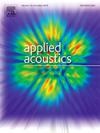Enhancing quality inspection of highly variant geared motors
IF 3.4
2区 物理与天体物理
Q1 ACOUSTICS
引用次数: 0
Abstract
Quality inspection is an important step in industrial production to avoid early failures and customer complaints. Custom-built products are often produced in a high number of variants and a low number of instances per variant, which makes automation of quality inspection a difficult task. Today’s manual inspection is cost-intensive and error-prune. This paper introduces the unexplored problem setting of quality inspection of highly variant geared motors and provides a full concept solving this industrial sound analytics problem. To enable research on this important topic, we introduce the publicly accessible Lenze quality inspection dataset, named Lenze-QI* and highlight its special challenges and characteristics. In contrast to other existing datasets, it is fully real-world, and it includes the variants configuration that can be used in machine learning algorithms. It is further demonstrated that the problem setting cannot be solved via state-of-the-art methods but using our proposed two-step approach. First, three feature vectors from the domain of advanced signal processing are proposed. The best performing approach is based on psychoacoustics, while also the approaches using the logarithm envelope or deep learning in combination with optimized spectrogram parameters are still useful. Second, we introduce the conditional node type to be used in an isolation forest, taking the variant’s configuration as input. The resulting conditional isolation forest is a novel anomaly detection approach taking additional attributes into account. Overall, the best performance for Lenze-QI can be achieved by an ensemble of the three advanced signal processing approaches in combination with the novel conditional isolation forest. The state-of-the-art performance is overruled by an increase of 13% in the area under the receiver operating characteristic. We demonstrate that the quality inspection of geared motors can be automated despite many challenges.
*The dataset Lenze-QI can be downloaded following https://doi.org/10.5281/zenodo.13854459.
加强对大变型减速电机的质量检验
质量检验是工业生产中避免早期故障和客户投诉的重要步骤。定制产品通常有大量的变体,而每个变体的实例数量很少,这使得质量检查的自动化成为一项困难的任务。今天的人工检查成本很高,而且容易出错。本文介绍了大变幅减速电机质量检测中尚未探索的问题设置,为解决这一工业声音分析问题提供了一个完整的概念。为了研究这一重要课题,我们引入了可公开访问的Lenze质量检测数据集,命名为Lenze- qi *,并强调了其特殊的挑战和特点。与其他现有数据集相比,它是完全真实的,并且它包括可用于机器学习算法的变体配置。进一步证明,问题设置不能通过最先进的方法来解决,而是使用我们提出的两步方法。首先,提出了高级信号处理领域的三个特征向量。表现最好的方法是基于心理声学,同时使用对数包络或深度学习结合优化谱图参数的方法仍然有用。其次,我们引入隔离林中使用的条件节点类型,将变体的配置作为输入。由此产生的条件隔离林是一种考虑了附加属性的新型异常检测方法。总的来说,Lenze-QI的最佳性能可以通过将三种先进的信号处理方法与新的条件隔离森林相结合来实现。最先进的性能被接收机工作特性下面积增加13%所抵消。我们证明,尽管面临许多挑战,减速电机的质量检测可以实现自动化。*数据集Lenze-QI可从https://doi.org/10.5281/zenodo.13854459下载。
本文章由计算机程序翻译,如有差异,请以英文原文为准。
求助全文
约1分钟内获得全文
求助全文
来源期刊

Applied Acoustics
物理-声学
CiteScore
7.40
自引率
11.80%
发文量
618
审稿时长
7.5 months
期刊介绍:
Since its launch in 1968, Applied Acoustics has been publishing high quality research papers providing state-of-the-art coverage of research findings for engineers and scientists involved in applications of acoustics in the widest sense.
Applied Acoustics looks not only at recent developments in the understanding of acoustics but also at ways of exploiting that understanding. The Journal aims to encourage the exchange of practical experience through publication and in so doing creates a fund of technological information that can be used for solving related problems. The presentation of information in graphical or tabular form is especially encouraged. If a report of a mathematical development is a necessary part of a paper it is important to ensure that it is there only as an integral part of a practical solution to a problem and is supported by data. Applied Acoustics encourages the exchange of practical experience in the following ways: • Complete Papers • Short Technical Notes • Review Articles; and thereby provides a wealth of technological information that can be used to solve related problems.
Manuscripts that address all fields of applications of acoustics ranging from medicine and NDT to the environment and buildings are welcome.
 求助内容:
求助内容: 应助结果提醒方式:
应助结果提醒方式:


